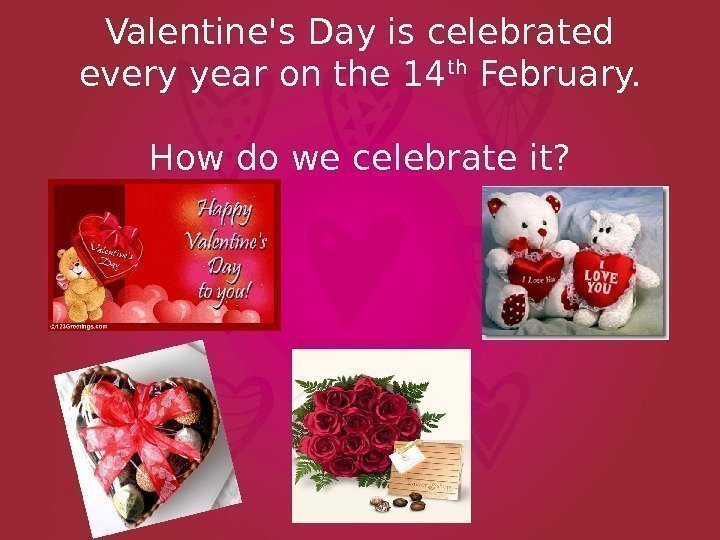The Historical Origins of Valentine’s Day
Why do we celebrate Valentine’s Day and who was Saint Valentine? – Valentine’s Day, a day synonymous with romance and chocolates, boasts a history far richer and more complex than the commercialized holiday we know today. Its origins are shrouded in mystery, with several competing theories attempting to unravel its true beginnings. Tracing its evolution from ancient Roman festivals to the modern-day celebration reveals a fascinating journey through time and cultural shifts.
Ancient Roman Influences and the Lupercalia Festival
One prominent theory links Valentine’s Day to the ancient Roman festival of Lupercalia, celebrated in mid-February. This fertility festival involved rituals, animal sacrifice, and a practice where young men would draw the names of women from a jar, pairing off for the duration of the festival or even marriage. While not a direct lineage, Lupercalia’s focus on pairing and celebrating love offers a potential connection to the later development of Valentine’s Day’s romantic connotations.
A Timeline of Valentine’s Day Celebrations
The evolution of Valentine’s Day celebrations spans centuries. From its potential roots in pagan festivals to its Christianization and eventual commercialization, the holiday has undergone a significant transformation. The following table provides a chronological overview of key events and their impact.
| Era | Key Events | Cultural Significance | Lasting Impacts on Modern Celebrations |
|---|---|---|---|
| Ancient Rome (Pre-Christian Era) | Lupercalia festival; focus on fertility and pairing of men and women. | Celebration of fertility and the renewal of life. | Potential indirect influence on the romantic aspects of Valentine’s Day. |
| Middle Ages (c. 5th Century AD) | Association with Saint Valentine (or Valentines); development of romantic poetry and courtly love traditions. | Shift towards a Christianized celebration with a focus on love and devotion. | Establishment of Valentine’s Day as a day for expressing romantic love. |
| 14th-18th Centuries | Valentine’s Day gains popularity in England; association with romantic letters and courtship. | Romantic expression becomes increasingly central to the holiday. | The tradition of exchanging love letters and cards persists. |
| 19th-21st Centuries | Mass production of Valentine’s Day cards; commercialization of the holiday. | Shift towards a commercialized holiday focused on consumerism and gift-giving. | Dominance of commercial aspects in modern Valentine’s Day celebrations. |
Historical Practices vs. Modern Celebrations
Historically, Valentine’s Day celebrations were less focused on commercial aspects and more on religious devotion or courtship rituals. The exchange of love letters and poems was a common practice, reflecting a more intimate and personal expression of affection. In contrast, modern celebrations are heavily influenced by commercial interests, with a significant emphasis on gift-giving, romantic dinners, and extravagant displays of affection. While the romantic core remains, the commercialization has significantly altered the character of the holiday.
Identifying Saint Valentine(s)
The identity of the Saint Valentine or Valentines associated with the holiday remains a subject of debate. The lack of definitive historical records makes pinpointing a single historical figure challenging. Several potential saints named Valentine existed during the Roman Empire, each with their own story and legend.
Multiple Potential Saints and Their Stories
Historians have identified several potential candidates for the “Saint Valentine” behind the holiday. These include a priest in Rome who defied the emperor’s ban on Christian marriages, a bishop who healed the jailer’s daughter, and a martyr who sent a farewell note signed “Your Valentine”. These different accounts contribute to the ambiguity surrounding the holiday’s true origins.
- Saint Valentine of Rome: Potentially the most prominent candidate, associated with performing secret marriages for Christian couples.
- Saint Valentine of Terni: A bishop known for his charitable works and healing abilities.
- Other Valentines: Several other lesser-known saints with the name Valentine existed during the Roman Empire, making the precise identification of the “original” Valentine problematic.
Contrasting Accounts of Saint Valentine’s Martyrdom
The accounts of Saint Valentine’s martyrdom also vary. Some accounts describe his execution under Emperor Claudius II, while others offer different narratives. This lack of consistency further complicates the effort to establish a clear historical link between a specific saint and the holiday’s origins.
The Development of Valentine’s Day Traditions
The traditions associated with Valentine’s Day have evolved significantly over time. The gift-giving aspect, for instance, has transformed from simple tokens of affection to elaborate displays of commercialized romance. The symbols associated with the holiday also carry cultural weight, shaping its image and meaning across generations.
The Evolution of Gift-Giving
Initially, gifts exchanged on Valentine’s Day were likely more modest and personal, reflecting a sincere expression of affection. As the holiday gained popularity, the nature of gifts shifted, influenced by changing social norms and commercial pressures. The modern focus on expensive gifts and grand gestures represents a significant departure from the simpler expressions of affection seen in earlier periods.
Traditional Symbols and Their Significance

Several symbols are deeply associated with Valentine’s Day, each carrying a unique cultural significance. The heart, for example, represents love and affection, while Cupid, the Roman god of love, symbolizes romantic desire. Roses, with their beauty and fragrance, have become a classic symbol of romance.
| Tradition | Origin and Evolution |
|---|---|
| Heart-shaped symbols | Ancient symbol of love; adoption into Valentine’s Day traditions likely occurred during the Middle Ages. Modern association with commercialized imagery. |
| Cupid | Roman god of love; association with Valentine’s Day reinforces its romantic connotations. Depiction varies across time and cultures. |
| Roses | Symbol of love and beauty in various cultures; became strongly associated with Valentine’s Day during the Victorian era and continues to be a popular gift. |
| Chocolate | Association with Valentine’s Day is relatively recent, reflecting the commercialization of the holiday in the 20th century. Became a staple gift due to its association with romance and indulgence. |
Commercialization and its Impact, Why do we celebrate Valentine’s Day and who was Saint Valentine?
The commercialization of Valentine’s Day has had a profound impact on its cultural perception. While the holiday continues to celebrate love and romance, the commercial pressures have led to a focus on consumerism and the exchange of material goods. This shift has sparked debates about the authenticity of modern Valentine’s Day celebrations and their departure from more intimate and personal expressions of affection.
Valentine’s Day Around the World
While Valentine’s Day is celebrated globally, the traditions and customs associated with it vary considerably across different cultures. These variations highlight the diverse ways in which love and affection are expressed and celebrated around the world.
Unique Traditions in Different Cultures
In Japan, for example, women traditionally give chocolates to men, while men reciprocate a month later with gifts. In South Korea, there are specific days for different types of chocolate gifting. In some parts of the world, Valentine’s Day celebrations are less pronounced, or integrated with other local festivals or traditions.
- Japan: Women give chocolates to men; men reciprocate with gifts a month later (White Day).
- South Korea: Different days for different types of chocolate gifts (from women to men, friends, etc.).
- Philippines: Mass weddings are a popular tradition.
The Cultural Significance of Love and Romance: Why Do We Celebrate Valentine’s Day And Who Was Saint Valentine?

Valentine’s Day plays a significant role in promoting and celebrating love and romantic relationships. Its impact on societal perceptions of love and relationships is multifaceted, reflecting both the positive aspects of expressing affection and the commercial pressures associated with the holiday. It also serves as a reminder of the importance of expressing love and affection throughout the year, beyond the confines of a single commercialized day.
Expressing Affection Beyond Valentine’s Day

While Valentine’s Day provides a dedicated occasion for expressing love and commitment, it’s crucial to recognize that expressing affection shouldn’t be limited to a single day. Healthy relationships thrive on consistent communication, acts of kindness, and ongoing expressions of appreciation and love. These actions, rather than solely relying on commercially driven gestures, contribute to the strength and longevity of romantic bonds.